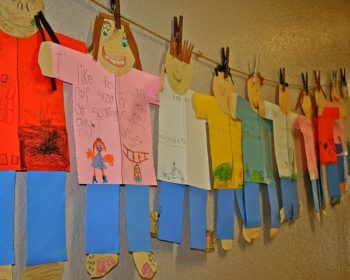How We Help Our K-12 Children Manage Money
 How We Help Our K-12 Children Manage Money
How We Help Our K-12 Children Manage Money
It is a new year with opportunities for growth and understanding for all. Many families redefine chore responsibilities with the start of each new year. Families also discuss the relevance of an allowance to help their children learn how to save for treasured purchases. Some families provide a weekly allowance for being a family member while others tie the allowance to a list of household chores. Many families also encourage their children to take on significant household responsibilities that may include weekly grocery shopping, yard work, painting, and housecleaning to earn extra money for specific needs they may include hobbies, sports camps, sporting equipment, school sponsored club trips, and clothing purchases. For example, some students start making crafts for crafts fairs or sell their products on online websites.
Middle School Student Money Management
Middle school students can expand their financial literacy by:
- Managing an annual clothes allowance with agreed budgetary items or requirements
- Learning to manage a cell phone plan and allowance
- Managing a savings account for college that may include learning about various savings investments (e.g. certificates of deposit, U.S. Savings Bonds, and mutual fund investments)
- Supporting neighbors and friends by babysitting, dog walking, selling baked goods, and providing computer support services
High School Student Money Management
High school students can also support the family by:
- Supporting the use of a family car by paying for gas, car maintenance expenses, and the increased premium for auto insurance
- Getting a summer or after school job to save for college and pay for added clothing, entertainment, hobbies, and sporting activities
- Research the cost for various college and career preparation programs and contribute to their college and career savings plan when earning money
- Managing the family’s weekly food budget
- Planning and budgeting for various family outings and trips
- Learning how to write a grant and apply for funding for a school or community service need
- Explore various investment options to contribute to the college and career fund
- Working with their parents to understand the family daily, weekly, and monthly household budget to prepare for an independent college and career life after high school with clear expectations of what is costs to go to various colleges and live away from home
Self-Reliant Children
As we partner with our children to manage money and guide them in the process, they will become self-reliant and resilient when overcoming various financial setbacks and challenges. Our goal as parents can be to help our children become capable money managers by the time they are 18 years old. This means they have reasonable expectations of what daily life costs are and how they can manage and support their family with these costs when they start an independent college and career life away from home.
Much success teaching your kids about money management!
Mary Ann
Copyright (c) 2021 by GenParenting
 Many parents and students continue to struggle with remote learning. As a substitute teacher/tutor for second grade students using the Google classroom platform, I provide literacy writing units for students and tutor them in reading and writing. I also help students understand how to use their preferred learning styles when tackling difficult subjects. For example, one of our students loves to sing her math solutions. Other students love to calculate math solutions. Still others write and describe the steps to solving math problems as they complete the computations. When teaching students how to write about a topic, we provide students with options on how they can complete their assignments.
Many parents and students continue to struggle with remote learning. As a substitute teacher/tutor for second grade students using the Google classroom platform, I provide literacy writing units for students and tutor them in reading and writing. I also help students understand how to use their preferred learning styles when tackling difficult subjects. For example, one of our students loves to sing her math solutions. Other students love to calculate math solutions. Still others write and describe the steps to solving math problems as they complete the computations. When teaching students how to write about a topic, we provide students with options on how they can complete their assignments. One Word Challenge
One Word Challenge
 Winter Break Activities that Reinforce Kids’ Learning at Home
Winter Break Activities that Reinforce Kids’ Learning at Home